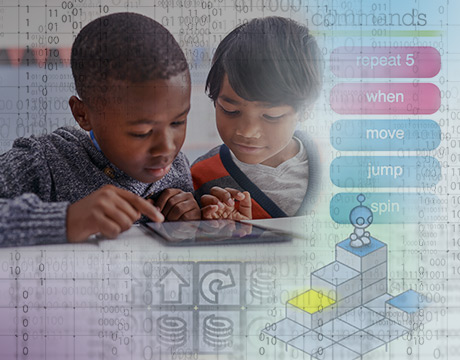How to Raise a Coder in Four Easy Steps
How to Raise a Coder in Four Easy Steps


In today’s digital age, technology is a defining characteristic of nearly every industry. If anything, technological innovation will continue to accelerate in the coming years.
That means that coding will soon join “reading, writing, and arithmetic” as a vital childhood skill needed for future success.
Unfortunately, the U.S. education system has historically lagged in fostering an interest in the technological fields, despite recent emphasis on STEM (science, technology, engineering, and math) curriculums. By the time students hit high school, only 16% are interested in STEM-related careers, according to the U.S. Department of Education.
The result has been a huge shortage of American workers in those fields, especially computer science. According to Code.org, an advocacy group for coding education, 58% of all new STEM jobs are in computing, yet only 8% of STEM graduates end up in computer science jobs. This could have something to do with the fact that only 40% of U.S. schools teach computer science, despite that 90% of parents want their children to study it.
Luckily, as an engineer or any concerned parent, you don’t have to rely on school to bolster your child’s interest in STEM fields. You don’t even have to wait until they’re in school to get started. Here’s how you can foster your child’s interest in coding from an early age:
1. Use age-appropriate activities
No one is suggesting sitting young children down with a manual and teaching them Python or Java. Start with the basics, and keep it light and fun based on your child’s age. Apps are a great way to get started with your child’s coding education, since they combine gameplay with the actual technological tools that coding involves. There are tons of apps aimed at a variety of age groups that are designed to get kids into coding through play. Here are a few examples:
- Age 4 – 8: Lightbot, Jr. allows young children to solve simple puzzles using basic coding principles. For older children (9 and up), there’s also standard Lightbot, which offers slightly more complicated puzzles.
- Age 5 and up: With Cargo-Bot, kids can use simple coding to “teach” a robot how to move crates around the screen. The levels increase in difficulty, but the easiest level is user-friendly enough for five-year-olds.
- Age 6 – 10: Daisy the Dinosaur is another fun app for younger children, where the user can animate a cartoon dinosaur through basic drag-and-drop actions, teaching kids the code principles behind objects and sequencing.
- Age 8 – 12: Hopscotch enables kids to design and build their own games, stories and art, and then publish them to a moderated online community. They can also play and moderate other existing games.
Apps aren’t the only way to engage your children in fun coding play. There are tons of toys and kits available to give your children the opportunity for hands-on experimentation.
2. Emphasize the creative aspects
There are a lot of misconceptions that software as a field is universally dry and dull. Unfortunately, this attitude can turn children away from the subject altogether. But coding isn’t just about complex languages and mathematical principles; it’s about imagination and innovation. It involves storytelling, artwork, and design.
When introducing coding to kids, frame it through this creative lens. You can support this by introducing coding tools and games that play on your children’s creative passions. Scratch, for instance, is a program that allows kids in elementary school onward to create and program their own animations and games, in areas such as music, painting, and storytelling. It may help your children’s interest to know that technology and creativity are not mutually exclusive; in fact, they go hand in hand.
3. Make it social
If your kids don’t show an interest in coding on their own, they might be more inclined to participate if it’s something they can do with their friends. Research showed that in the early days of social media, kids learned HTML to update their MySpace pages as part of engaging with their peer group.
Not only are there several games and apps (like many of those listed above) that encourage group play in coding and interaction through moderated communities, there are also coding summer camps and youth programs to get kids engaged in coding together.
4. Encourage creative problem solving
Critical thinking and problem solving are some of the key characteristics of professional coders. Even when they’re not directly engaging in hands-on activities, you can encourage your child to think like a coder in day-to-day life. When your child encounters a problem, ask them to think up an invention or tool that would help them solve it. How would that technology work? What would it take to make it work?
This not only fosters a child’s creativity, it gets them thinking about how technology can be used to solve real-world problems, and how they can be the masterminds behind that technology.
In today’s ever-changing technological landscape, coding is a valuable skill that not enough people have. By encouraging your child’s interest in this field, you’re not only fostering that important skill, you’re opening up a world of endless possibility and opportunity.
Find out more about the latest in Career and Education from ASME.org.
Tim Sprinkle is an independent writer.





